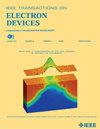改进封装以提高 P1.2 微型 LED 发射显示器在高温高湿环境下的可靠性
IF 2.9
2区 工程技术
Q2 ENGINEERING, ELECTRICAL & ELECTRONIC
引用次数: 0
摘要
作为下一代显示技术,微型 LED(MLED)发光显示器采用电流型薄膜晶体管(TFT)器件驱动发光,具有高对比度、高亮度等优点。其中,玻璃基板封装(POG)是将封装好的 MLED 与 TFT 玻璃基板粘合在一起。与印刷电路板(PCB)基板相比,使用硬质玻璃基板可以获得更小的线宽和线间距,从而满足每英寸高像素(PPI)产品的需求,同时保持产品的轻薄。在这项研究中,我们使用聚对二甲苯 C 和阻隔膜包装来探索不同的加工路线。通过比较不同的封装方法,证明使用对二甲苯封装的 P1.2(灯珠间距为 1.2 毫米)MLED 产品可在 60 °C 和 90% 相对湿度(RH)条件下通过 500 小时可靠性测试。这种先进的封装解决方案对于提高 MLED 发光显示器的可靠性和面板使用寿命具有重要意义。本文章由计算机程序翻译,如有差异,请以英文原文为准。
Enhanced Packaging for Reliability Improvement of P1.2 Mini-LED Emissive Displays in High Temperature and Humidity
As the next-generation display technology, the mini-LED (MLED) emissive display adopts a current type thin-film transistor (TFT) device to drive light emission, possessing advantages, such as high contrast ratio and high brightness. Among them, package on glass (POG) is to bond the encapsulated MLED to the TFT glass substrates. Compared to printed circuit board (PCB) substrate, the usage of rigid glass substrates allows for smaller linewidth and line space to meet the needs of high pixel per inch (PPI) products while maintaining product lightness and thinness. In this study, we used parylene C and barrier film packaging to explore different processing routes. By comparing different packaging methods, it was demonstrated that the P1.2 (lamp bead spacing 1.2 mm) MLED product could pass the 500-h reliability test at 60 °C and 90% relative humidity (RH) using parylene. This advanced packaging solution is of great significance for improving the reliability and panel lifetime of MLED emissive displays.
求助全文
通过发布文献求助,成功后即可免费获取论文全文。
去求助
来源期刊

IEEE Transactions on Electron Devices
工程技术-工程:电子与电气
CiteScore
5.80
自引率
16.10%
发文量
937
审稿时长
3.8 months
期刊介绍:
IEEE Transactions on Electron Devices publishes original and significant contributions relating to the theory, modeling, design, performance and reliability of electron and ion integrated circuit devices and interconnects, involving insulators, metals, organic materials, micro-plasmas, semiconductors, quantum-effect structures, vacuum devices, and emerging materials with applications in bioelectronics, biomedical electronics, computation, communications, displays, microelectromechanics, imaging, micro-actuators, nanoelectronics, optoelectronics, photovoltaics, power ICs and micro-sensors. Tutorial and review papers on these subjects are also published and occasional special issues appear to present a collection of papers which treat particular areas in more depth and breadth.
 求助内容:
求助内容: 应助结果提醒方式:
应助结果提醒方式:


